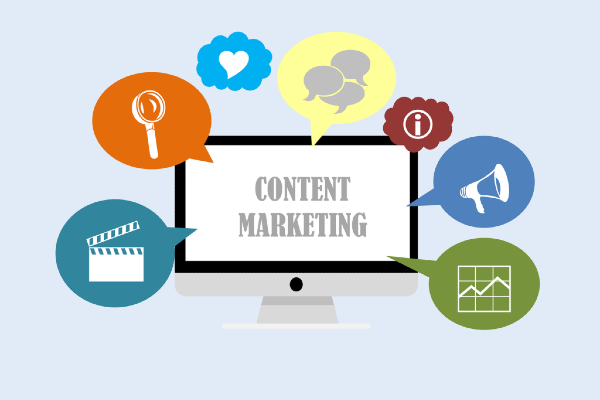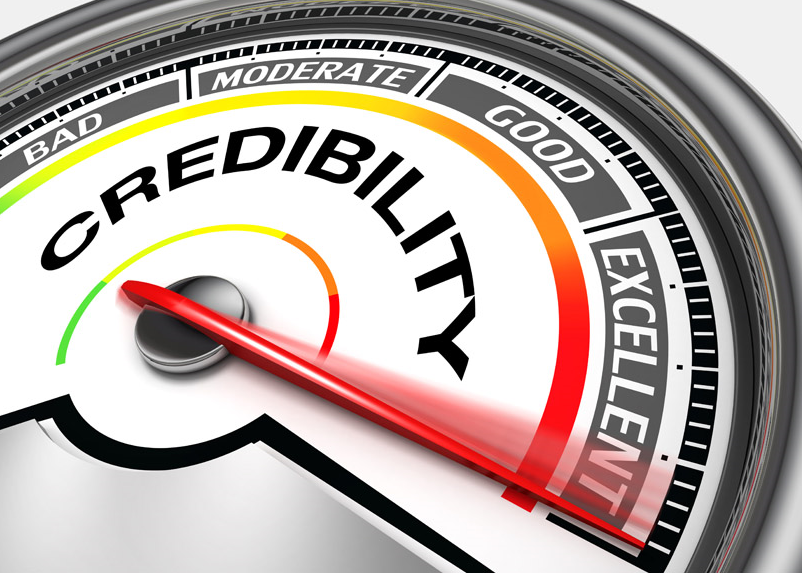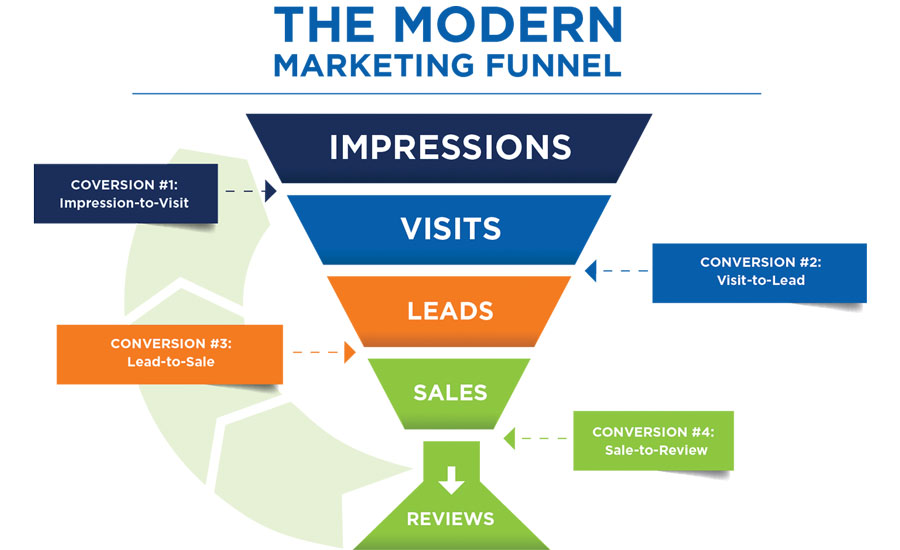How to Create a Content Distribution Strategy
Content Distribution Strategy: a plan for publishing and promoting your content to a clearly-defined buyer persona using multiple media formats distributed through various channels. Content distribution channels can be categorized into three types: paid channels, earned channels, and owned channels.
Content Distribution Channel: a path or route used to deliver content marketing messages to a clearly-defined buyer persona. The channel can be as short as a direct exchange between the organization and the customer or can involve the use of content distribution platforms like social media sites or search engines.
Topics Covered in This Article
Content Distribution Strategy and Best Practices
The third step of your Content Marketing Strategy is to create and implement a content distribution strategy.
This starts with finding the best content distribution channels for reaching your target audience, tracking your progress, and optimizing your messages.
Rubber Chicken Marketers pick marketing channels according to what’s popular. This is a quick way to bust your marketing budget with little or no return.

Smart content marketers, however, pick channels where they can make the biggest impact on their audience. They also pick channels that allow them to track and optimize their content marketing ROI so they can achieve their content marketing goals while reducing their overall marketing costs.
This article explains how to build and implement a Content Distribution Strategy, starting with the three types of content distribution channels. We’ll cover three rules for picking the best channels, and then give you a simple blueprint for building and implementing your content distribution schedule.
NOTE: this article mentions three concepts which we cover in other articles, including our articles on 1) The Antifragile Content Marketing Strategy, 2) How to Create a Buyer’s Persona, and 3) The Buyer’s Journey vs Customer Journey.
Types of Content Distribution Channels
Each of these types of distribution channels has its own advantages and disadvantages. When you maximize the advantages of each channel, their disadvantages become irrelevant and your results become more consistently profitable and sustainable.
Paid Channels
Paid Channels
Description: channels where you pay to have your content published.
Earned Channels
Earned Channels
Description: channels where you earn the right to publish your content.
*I explain below why social media pages are earned channels and not owned channels.
Owned Channels
Owned Channels
Description: channels where you own and control the means of distribution.
*Some service providers (website, email, or video hosting services) may cancel you for content they find unacceptable.
These content distribution channels can be online, or offline. The important point is to use the channels that help you achieve your content marketing goals and increase your content marketing ROI. Before we talk about that, let me say one more word about the difference between earned and owned channels.
(Click here if you prefer to skip my rant)
Social Media Pages are NOT Owned Channels
Your Social Media accounts are not yours. They are owned by the Social Media company that hosts those pages. This could change at some point in the future, in which case I’ll update this article. However, as long as Social Media websites have the legal right to shadowban, suspend, or even cancel and delete your accounts, it’s a risk to treat your Social Media accounts and pages as owned channels.
In 2014, a client in the self-help niche hired me and my team to create a training course to promote to his Facebook fans. At the time, he had hundreds of thousands of fans and several years of posts and responses built up.
Once created, the training course started pulling in thousands of dollars a month in sales. Knowing this was not a sustainable strategy, I urged my client to expand his content distribution strategy and start focusing on Content Equity.

He ignored my advice, and I eventually quit him to pursue other projects. At the end of 2016, I emailed him to see how his business was going. He hadn’t taken my advice, and his page had been suspended over one of Facebook’s now-infamous “community standard violations.” With no email or direct mail list and no content equity, his sales had flatlined and he could longer even pay his monthly bills.
The last time I talked to him (in 2018), he was working customer service for a measly $30,000.00 a year and trying to rebuild his business in his spare time. All this because he mistakenly believed that he “owned” his Facebook page. This is, of course, an extreme example. But it proves an important point about the difference between earned content distribution channels and owned content distribution channels.
Three Rules for Picking Content Distribution Channels
The PRIMARY goal of your content distribution strategy should be to use Paid channels and Earned channels to increase the strength and sustainability of your Owned channels.
Everything you do on your paid and owned channels should be done with this end goal in mind. This is the foundational principle of choosing good content distribution channels. The following three rules will help you apply it.
Content Distribution Rule #1: Content Equity
Every content distribution channel you use should help you build Content Equity. This is the first rule of content distribution. Content Equity, as defined below, is the most valuable of the Five Benefits of a Content Marketing Strategy:
Content Equity: the cumulative value of a brand's published content in terms of its capacity to attract and convert customers and to increase ROI by improving marketing KPIs (lead capture rates, cost per lead, conversion rates, cost per acquisition, value per transaction, value per customer, etc.).
A good example of Content Equity is a local business with hundreds of positive customer reviews published on trustworthy review sites. Those reviews will attract a steady flow of inbound leads, even when the business isn’t actively marketing for new customers. Stage#3 Prospects will also find these reviews while researching and comparing companies.
Most importantly, by the time these prospects talk to a salesperson, they’ll be more likely to make a buying decision and pay premium prices for what they perceive to be a higher quality product or service. In other words, positive and credible online reviews have an evergreen ability to generate new business for a company. This is what I mean by Content Equity, and it applies to more than just online reviews.
Smart content marketers build content equity using relevant, credible, and well-crafted articles, videos, infographics, white-papers, and podcasts. If this content is consistently showing up at the top of search results, or getting shared on social media, picked up by journalists, linked to by other bloggers, or mentioned on podcasts, radio, or TV shows, it the same effect to the positive reviews mentioned above.
Every content distribution channel you use should help you build Content Equity. All the content you publish on paid or earned platforms should be used to drive traffic to your website, build your email and direct mail subscriber list, get sign ups for a membership site or help you build up your other owned channels. While building your content distribution strategy, ask yourself which channels will best help you achieve this long term goal.
Content Distribution Rule #2: Audience Relevance
Every content distribution channel you use should help you reach the target audience defined by your Buyer Persona(s). Well-meaning, yet naive marketing enthusiasts often say things like…
Some will even quote statistics, saying:
“Four million people use ____, so if you’re not marketing there, you’re missing out on a LOT of prospective customers!”
These statements are based on the outdated idea that marketing is about getting your message in front of as many eyeballs as possible. This is a quick way to burn up your marketing budget with little or no return.
A recent Survey from Rakuten Marketing found that marketers estimate to have wasted 26 percent of their budget on the wrong strategies and channels. According to a 2016 Study from Nielsen’s Digital Ad Ratings, about 48% of all online ad budgets were wasted because they were not reaching the right audience. This is why a good content marketing agency will never advise you to market somewhere just because it’s cheap, popular, or new.
The more important question is whether a content distribution channel gives you targeted access to the audience defined by your buyer persona(s). If it does, put it on your shortlist. If not, leave it off. Never mind how popular it is or how many of your competitors are marketing there. Content marketing isn’t about showing up everywhere. It’s about showing up where your target audience is most likely to find you.
Content Distribution Rule #3: Brand Credibility
Every content distribution channel you use should increase your brand’s credibility with your target audience. This content distribution rule is based common sense that even non-marketers can understand.
All other things being equal, I’m sure you’d feel better about hiring a lawyer you met at a fundraiser dinner than one you met at the dollar store. I’m also sure you’d prefer that your daughter meet your future son-in-law at college instead of a night club.

Likewise, where you publish your content has a tremendous impact on how credible you appear to your audience. This is why the third and final rule of content distribution is to choose channels where you’ll appear credible simply for showing up there. For example, most marketers would agree that advertising on a spam site would make your brand look low budget while an article published in a popular print magazine would have the opposite impression.
This rule simply has you consider the credibility differences between all your content distribution channels, and create a shortlist of your most credible channels, like this:
Of course, you do this only after finding the channels that will help you build Content Equity and where your target audience is most likely to find you. This should include content distribution channels that will build national or global credibility with your target audience.
For example, if you’re selling beauty products, it might be smart to pay (once) for a full-page advertorial in Allure magazine so you can credibly claim to have been published there. If you’re a business consultant, it might be worth the money or effort to get one of your articles published in Success magazine or on their website.
Sometimes, it makes sense to do this even if the article doesn’t generate a profitable response. The question is whether adding “as seen in Success Magazine” or “as seen in GQ Magazine” to your content will increase the perceived credibility of your brand enough to boost your long term results. While we’re on this topic, let me debunk a common misconception about content distribution channels.
(Click here if you prefer to skip my rant)
Your content distribution strategy should include online and offline channels. Over the years, I’ve had to work hard to convince B2B service providers (business consultants, counselors) to use direct mail for reaching out to new and existing clients. Some have even laughed at me, claiming that email is “cheaper” or that they can “reach more people that way.”
This is a shortsighted way to evaluate or compare content distribution channels. The question isn’t how cheap or popular a channel is, the question is whether the channel will yield Return on Investment (ROI). Here are five statistics that prove Direct Mail is a valuable content distribution channel, especially for reaching out to your existing customer:
Source: SmallBizGenius.com article on Direct Mail Statistics.
Direct Mail gives you a higher perception of value and sophistication that email simply can’t offer. Sure, it might not make sense to physically mail content to people who have never bought from you. But you should definitely use it to reach customers who have already bought from you (aka, Stage #5 Prospects).
Your customers are already being bombarded by marketing emails and online content. You can stand out from this crowd by using online and offline content distribution channels to reach them. Think about the loads of cold emails you get every day from people trying to sell you things.
Compare this to the amount of well-designed, well-crafted, high-quality articles or newsletters you get in the mail. By showing up in your customer’s mailbox two or three times a year, you put your brand in a league of its own.
Three Rules of Content Distribution – Summary
Sample Content Distribution Strategy
Your Content Distribution Strategy is an actionable plan for creating, publishing, and promoting using your selected distribution channels. When done right, this strategy gives you an evergreen blueprint for creating, publishing, promoting, and tracking your content on a monthly, weekly, and daily, basis. Creating your content distribution strategy involves three steps:
Once these steps are done, you simply use your content creation and distribution schedule to implement your content marketing strategy.

Step #1: Pick Your Distribution Channels
Use the three content distribution rules discussed above to create a shortlist of your best content distribution channels, arranged according to their channel type:
The sample content distribution strategy below will be based on this list.
Step #2: Pick Your Content Types
Use your list of content distribution channels to decide which content types (aka, media formats) you plan to publish on each channel. I suggest you organize these content types using the Five Stages of The VQ Success Buyer’s Journey, as in this example:
Buyer’s Journey Stage #1
Buyer’s Journey Stage #1
Description: These prospects are indifferent about the PROBLEM your product or service solves.
Content Marketing Objectives:
See our Buyer’s Journey vs Customer Journey article for more details on Stage #1 messaging strategies.
Stage #1 Content Types (By Distribution Channel):
*You are reading the VQ Success Content Distribution Strategy article.
Buyer’s Journey Stage #2
Buyer’s Journey Stage #2
Description: These prospects are curious about the available SOLUTIONS to their problem.
Content Marketing Objectives:
See our Buyer’s Journey vs Customer Journey article for more details on Stage #2 messaging strategies.
Stage #2 Content Types (By Distribution Channel):
*You are reading the VQ Success Content Distribution Strategy article.
Buyer’s Journey Stage #3
Buyer’s Journey Stage #3
Description: These prospects are sold on your TYPE of solution and comparing a list of brands.
Content Marketing Objectives:
See our Buyer’s Journey vs Customer Journey article for more details on Stage #3 messaging strategies.
Stage #3 Content Types (By Distribution Channel):
*You are reading the VQ Success Content Distribution Strategy article.
Buyer’s Journey Stage #4
Buyer’s Journey Stage #4
Description: These prospects are sold on your BRAND, but haven’t completed a purchase yet.
Content Marketing Objectives:
See our Buyer’s Journey vs Customer Journey article for more details on Stage #4 messaging strategies.
Stage #4 Content Types (By Distribution Channel):
*You are reading the VQ Success Content Distribution Strategy article.
Buyer’s Journey Stage #5
Buyer’s Journey Stage #5
Description: Customers who have the potential to become more loyal and profitable.
Content Marketing Objectives:
See our Buyer’s Journey vs Customer Journey article for more details on Stage #5 messaging strategies.
Stage #5 Content Types (By Distribution Channel):
*You are reading the VQ Success Content Distribution Strategy article.
Step #3: Create Your “Content Pantry” and Distribution Schedule
A Content Pantry, as defined below, is a shortcut to implementing your content creation and distribution strategy without the usual chaos that goes with managing large-scale marketing projects (i.e., miscommunications, blown budgets, missed deadlines, etc.):
Content Pantry: a collection of "seed content" that you use to create all your other marketing content in a variety of media formats. Your content pantry might include: a printed book, a collection of 12 to 30 high-quality articles, or simply a file with messages targeting your Buyer Persona(s) at each stage of The VQ Success Buyer's Journey.
Think of your Content Marketing Pantry like the pantry in your kitchen. When you go to your kitchen to prepare a meal, most of the ingredients are already in your pantry. This saves the time of having to run to the store or create an ingredient from scratch.
Likewise, your Content Pantry makes it easy to consistently create and publish high-quality content for all your distribution channels. It’s hard to overstate how much time and energy this will save you, long and short term.
When done right, your Content Pantry can be used to create dozens of pieces of content, in multiple media formats, for all of your content distribution channels. I explain how to do this in our article on how to create and implement a Content Creation Plan. In case this idea is still unclear, let me give you a hypothetical story about a Content Pantry in action.
(Click here if you prefer to skip this example)
Imagine you’re a financial consultant who specializes in helping married couples build and execute a retirement plan. You’ve already written a start-to-finish book on financial management for married couples. Now you want to use content marketing to promote your book and find new clients. You have two options for doing this.
You could spin your wheels trying to create a brand-new website article, explainer video, and a half-dozen new social media posts every month. Or you could use your book as your Content Pantry and create dozens of pieces of content (in multiple media formats) based on the most salient ideas, examples, stories, and data points from the book. This second option solves two problems.
In my experience, one of the hardest parts of implementing a content marketing strategy is the constant pressure to create and publish new content every month, every week, or even every day.
Another challenge is making sure that there’s consistency in your messages across all your content distribution channels and media formats. Working from a Content Pantry solves these problems and more.
Sample Content Distribution Schedule
Once you’ve picked your content distribution channels and content types, you’re ready to create your content distribution schedule. Your content distribution schedule is a practical to-do list for your content marketing team. It tells you and your team when to create and distribute your content.
These four pieces of content make up your Content Pantry. These first two pieces of seed content (your Stage #3 Sales Page and your Stage #4 Order Page) only need to be created once. Your Blog Article and your Quarterly Newsletter will need to be created every month, and every three months, respectively.
The rest of your monthly, weekly, and daily content will simply be derived from one of these four pieces of seed content, as in the sample content distribution schedule below. I have highlighted the four pieces of seed content for clarity:
Buyer’s Journey Stage #1
Monthly Stage #1 Content
Weekly Stage #1 Content
Daily Stage #1 Content
Buyer’s Journey Stage #2
Monthly Stage #2 Content
Weekly Stage #2 Content
Daily Stage #2 Content
Buyer’s Journey Stage #3
Monthly Stage #3 Content
Weekly Stage #3 Content
Daily Stage #3 Content
Buyer’s Journey Stage #4
Monthly Stage #4 Content
Weekly Stage #4 Content
Buyer’s Journey Stage #5
Monthly Stage #5 Content
Weekly Stage #5 Content
Once you have your content distribution schedule created, you have completed the fourth step of the Antifragile Content Marketing Strategy. The next step would be to use your content distribution schedule to build and implement your Content Creation Plan. I highly recommend you read our Content Creation Plan and Implementation article for a step-by-step strategy for this next step.
Final Thoughts on Your Content Distribution Strategy
We hope you enjoyed this article on How to Create a Content Distribution Strategy.
In closing, let me answer a question I sometimes get about the difference between the Buyer’s Journey and a Marketing Funnel. While these are two separate concepts, they can also work together. It all depends on how smart you are in setting up your content distribution strategy and integrating it with your marketing funnel.
A good marketing funnel should allow you to track user behaviors, segment your prospects (and your customers), and deliver messages that are customized for three things:
These three levels of user segmenting are vital to building an efficient marketing automation funnel. This requires good marketing automation technology, which can be expensive and complicated to set up.

Rubber Chicken Marketers are typically too lazy to do this much work. Sure, they might set up a marketing funnel and customize messages according to the prospect’s stage in the funnel. But that’s as far as it goes. Smart marketers segment prospects by their Buyer Persona, their stage in the Buyer’s Journey (or customer journey), and their content and/or product interests.
If your website is built on WordPress, I suggest getting the Vervenia Marketing Automation Plugin for WordPress. It’s the only WordPress marketing automation plugin that gives you all these features:
Most importantly, its user segmenting features allow you to segment and tag your prospects and customers according to their audience (buyer persona), their stage in the buyer’s journey, and their content or product interests.
Don’t assume that every prospect who enters your marketing funnel is at a certain stage of The VQ Success Buyer’s Journey. Some of your new email subscribers will be at Stage #2, while others will be at Stage #3 or even Stage #4. Your website visits, social media views, and pay-per-click impressions may come from prospects at Stage #1, #2, #3, or even Stage #4 or #5. The same is true for every stage of your marketing funnel, and for all of your content distribution channels.
This is why it’s important to invest in the right marketing automation technology and to set up a marketing funnel that allows you to segment your prospects AND customers and get the best messages and offers in front of them. The more you do this, the more effective and profitable your content marketing strategy will be.
This concludes our article on How to Create a Content Distribution Strategy.
-Best









